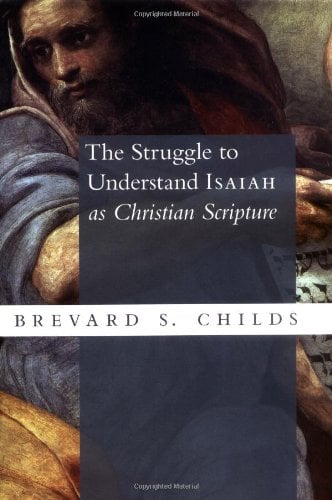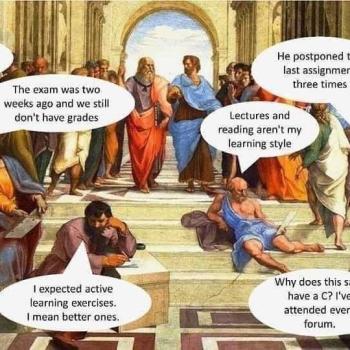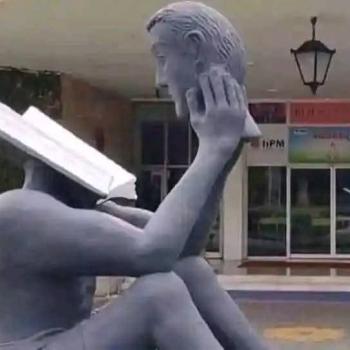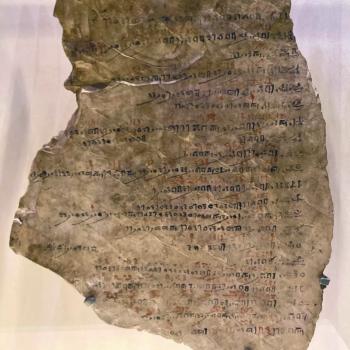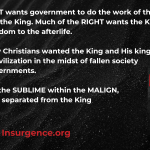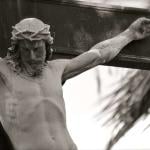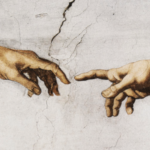The Antiochian school of interpretation (Theodore, Julian, Chrysostom, Theodoret) has frequently been misunderstood, and as a result, misinterpreted. They were not simply interested in the literal or historical meaning of the text as oppose to the spiritual and allegorical interests of the Alexandrians. Childs outlines the approach of this school to theoria (theory): 1) the Antiochian theoria presupposes the historical reality of the events described by the Biblical author. These events function something like a mirror imaging forth a different (and sometimes distant) reality; 2) clearly their theoria affirmed a second future reality that is ontologically linked to the first; 3) in describing the relation between the two historical realities, the first is mediocre compared to the second which is perfect, the first is small the latter large, the first is a sketch and the latter is the fully finished work; and 4) Both events are objects for the theory, but the first one is seen as a less significant vehicle through which the prophet knowingly describes a greater future event in human history, but he is using hyperbole to do so.
Theodoret (ca. 393-460 A.D.) is the only one of this school whose full commentary on Isaiah has survived (with the possible exception of Chrysostom’s). Theodore, the predecessor of Theodoret, clearly reacted strongly against the allegorizing of Origen. It is not true however that the Antiochians rejected allegory lock, stock, and barrel. Theodore insisted that the OT was inspired by the same Holy Spirit and is not a veiled revelation of the NT which requires allegory to uncover its deeper meaning. He adds that the OT primarily addresses the needs of Israel, and so he resists the temptation to find Christ and Christian theology under every rock in the OT. For example he resisted the temptation to find the Trinity in the OT. He found only four Psalms to be predictive of Christ (Ps. 2,8,45,110). Otherwise the Psalms speak of the life of Israel in antiquity. No wonder Theodore was accused of ‘Jewish’ exegesis of the OT. Theodore’s go to method of relating the two testaments was typology. The OT events retained their own theological value, but were related to the NT ones as type to antitype. Theodore rejected the more Platonic contrast between earthly and spiritual realities, preferring to talk about the eschatological dimension of history which unfolds God’s purpose in stages leading to an ultimate conclusion in history.
Not surprisingly, Theodoret begins with a high view of the inspiration of the entire canon OT and NT. There is nothing in it that is there by accident, and there is indeed a definite meaning to be discerned in the text through careful exegesis. He believes in the harmony, coherence, intent and goal of Scripture and of course Jesus Christ is the key to interpreting it all, apart from which the Bible remains a closed and sealed book (Is. 29.11-12). He also holds the view that one has to be of the right spiritual disposition to understand the book, an attitude of humility and openness is required.
Theodoret indicates that the literal sense of the text is the plain or obvious meaning as opposed to some hidden meaning. The spiritual or figurative meaning of the text is not an arbitrary addition to the literal that comes from the over-heated imagination of the commentator. Rather it is a metaphorical extension of the obvious meaning. The figurative extends rather than denies the meaning of the literal. Then too the ‘figurative’ involves a wide variety of genre— the moral, the mystical, the homiletical.
Theodoret does indeed resort to typology when dealing with a prophetic book like Isaiah, though he is perfectly prepared to talk about an internal fulfillment in Israel in various case, but in other cases he sees only an external fulfillment in Christ and in the Gospel. He does not think allegorizing the OT so it is all merely a prefigurement of Christ does justice to the OT.
The focus of Theodoret’s Isaiah commentary is on shedding light on the more obscure passages and displaying their riches (see e.g. on Is.28.12). Obscurity is assumed to point to some deeper meaning. Because of his high view of Scripture Theodoret finds it important to closely attend to inter-textual references (e.g. Is. 1.2=Deut.31.28 or Is. 14.27=Deut. 32.39). Theodoret calls Isaiah an Evangelist, and sees the contents of the book as the manifestation of the ministry of Jesus from virginal conception to resurrection and beyond. Not surprisingly, since he was often embroiled in the Christological controversies in the church, he finds in Isaiah a testimony to the fact that God in Is. 6 had not revealed his actual nature, and in Is. 52-53 one has to reckon with the two natures of Christ which are in union and without confusion. While Theodoret does use Isaiah to critique unbelieving Jews, he actually believes that in Isaiah’s day there were more believing than unbelieving Jews. He is very concerned to interpret the text in the first instance in its original historical context, and that concern extends to the desire to get the historical context and facts right. For him, the line between literal and figurative interpretations is a fluid, not least because he recognizes that some texts like the song in Is. 5, are figurative or metaphorical to start with, and so a strict interpretation that sticks to the very words used and how they are used in this case will be inherently metaphorical in character. But there are places where, for example in Is. 1.16 the mention of cleansing with water is identified with water baptism, or amazingly, the thorns and thistles mentioned in Is. 5 after the vineyard is abandoned is related to the thorns used in the crown of Jesus. Theodoret uses the term tropikos for both metaphorical and typological modes of interpreting Isaiah. Interestingly, Theodoret takes the use of hyperbole as the signal or clue that one needs to go beyond the mere historical sense of the text, and he disagrees with Theodore that some OT prophecies have a merely ‘internal’ reference to the history of Israel. He can however allow at times for double fulfillment. In Is. 1.7-9 it was first fulfilled by Nebuchadnezzar and then by Rome. Unlike Chrysostom however, he is unwilling to see Is. 40ff. as referring to the return from Babylonian exile, and sees it entire fulfillment as happening in the NT era. The adoption of a typological approach to the OT, with the type-antitype identifications, corresponded to and dovetailed with the prophecy-fulfillment approach to history quite naturally. This allowed the OT to maintain its historical integrity and referents, while at the same time not neglecting its relationship to the NT.


